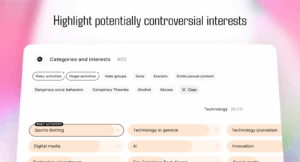What’s New in Chrome 28
Who needs a six-week old Chrome 27? Chrome 28 has arrived and is ready to download. Click the tool icon followed by About Google Chrome or head to google.com/chrome. Let’s see what’s been added to the world’s most-used browser…
Goodbye Webkit, Hello Blink
Chrome 28 is the first edition to use Google’s new Blink rendering engine. Enter chrome://version/ in the address bar and you’ll see Blink version 537.36. It was beaten off the starting blocks by Opera 15 but what’s a week between browser friends?
Blink is a fork of the Webkit engine and you’re unlikely to spot any major differences. The -webkit- prefix is still required for many CSS3 and JavaScript properties, rendering is identical and I’m yet to discover new Web Inspector features. Even the user agent remains much the same (not that user agent strings have a practical use)…
Mozilla/5.0 (Windows NT 6.2; WOW64) AppleWebKit/537.36 (KHTML, like Gecko) Chrome/28.0.1500.71 Safari/537.36
You may receive a small speed boost thanks to the new threaded HTML parser and pipelined page loading, but I doubt it’ll be noticeable in real-world use.
@supports Support
The @supports rule allows you to test for browser feature support in CSS3, e.g.
>@supports (text-shadow: 0 0 5px #000) {
.blur-text {
color: transparent;
text-shadow: 0 0 5px #000;
}
}The rule is available in Firefox, Opera 12 and Opera 15 so it’s finally becoming a practical option for web developers.
Rich Notifications
 Perhaps the most important new feature is rich notifications for Chrome apps and extensions. The alert windows can display formatted text, images and actions buttons directly inside the pop-up — refer to the API documentation and sample application for more information.
Perhaps the most important new feature is rich notifications for Chrome apps and extensions. The alert windows can display formatted text, images and actions buttons directly inside the pop-up — refer to the API documentation and sample application for more information.
The feature is currently available on Windows with Mac and Linux support coming soon. Whether it’ll be used for anything beyond Gmail is another matter. It’d be great for an RSS Reader, though, Google!
HTML5 Fullscreen API on Android
You can now enable a browser Fullscreen API on your mobile version of Chrome. That possibly makes more sense than a desktop browser and will be a bonus for HTML5 game developers.
Other than 16 fixed security issues, that’s it for Chrome 28. Nothing particularly exciting for web developers, but it’ll be interesting to see how Blink evolves during the next few months.
Frequently Asked Questions about Chrome 28
What are the new features in Chrome 28?
Chrome 28 introduced several new features and improvements. The most significant one is the introduction of the Blink rendering engine, which replaced the WebKit engine. This change aimed to enhance the browser’s speed, efficiency, and overall performance. Additionally, Chrome 28 also introduced rich notifications, which allow users to interact with notifications in a more dynamic and engaging way. Other updates include improvements in stability and security, as well as bug fixes.
How does the Blink rendering engine in Chrome 28 differ from the previous WebKit engine?
The Blink rendering engine, introduced in Chrome 28, is a fork of the WebKit engine. The main difference between the two is that Blink is designed to be faster and more efficient. It achieves this by reducing complexity and removing unnecessary parts of the code, which in turn improves the browser’s speed and performance.
What are rich notifications in Chrome 28?
Rich notifications are a new feature in Chrome 28 that allows users to interact with notifications in a more dynamic way. They can include images, buttons, and other interactive elements, and can be used for various purposes, such as displaying updates from social media or email, showing reminders, or even controlling music playback.
How does Chrome 28 compare to Firefox 12?
Both Chrome 28 and Firefox 12 are popular web browsers, but they have some key differences. Chrome 28, with its Blink rendering engine, is designed to be faster and more efficient than Firefox 12. It also offers rich notifications, a feature not available in Firefox 12. However, Firefox 12 has its own strengths, such as a wide range of add-ons and a strong focus on user privacy.
How can I update to Chrome 28?
To update to Chrome 28, you can go to the “About Google Chrome” option in the browser’s menu. If an update is available, it will automatically download and install. Once the update is installed, you may need to relaunch the browser to complete the process.
What are the system requirements for Chrome 28?
Chrome 28 can run on Windows XP and later, Mac OS X 10.6 and later, and Linux. It requires a system with at least 512MB of RAM and 350MB of free disk space.
Does Chrome 28 support HTML5?
Yes, Chrome 28 supports HTML5. In fact, it has one of the highest HTML5 compatibility scores among all web browsers, making it an excellent choice for viewing and interacting with HTML5 content.
How does Chrome 28 handle security?
Chrome 28 has several security features to protect users. It includes a built-in malware and phishing protection, and it automatically updates to the latest version to ensure that users have the most recent security patches. It also uses sandboxing technology to isolate each tab, preventing one compromised tab from affecting others.
Can I use Chrome 28 on my mobile device?
Yes, Chrome 28 is available for both Android and iOS devices. It offers the same features as the desktop version, including the Blink rendering engine and rich notifications.
How can I customize Chrome 28 to suit my needs?
Chrome 28 offers a wide range of customization options. You can change the browser’s appearance with themes, add functionality with extensions, and adjust settings such as the default search engine, homepage, and privacy settings. You can also sign in with your Google account to sync your bookmarks, history, and settings across all your devices.
Craig is a freelance UK web consultant who built his first page for IE2.0 in 1995. Since that time he's been advocating standards, accessibility, and best-practice HTML5 techniques. He's created enterprise specifications, websites and online applications for companies and organisations including the UK Parliament, the European Parliament, the Department of Energy & Climate Change, Microsoft, and more. He's written more than 1,000 articles for SitePoint and you can find him @craigbuckler.







